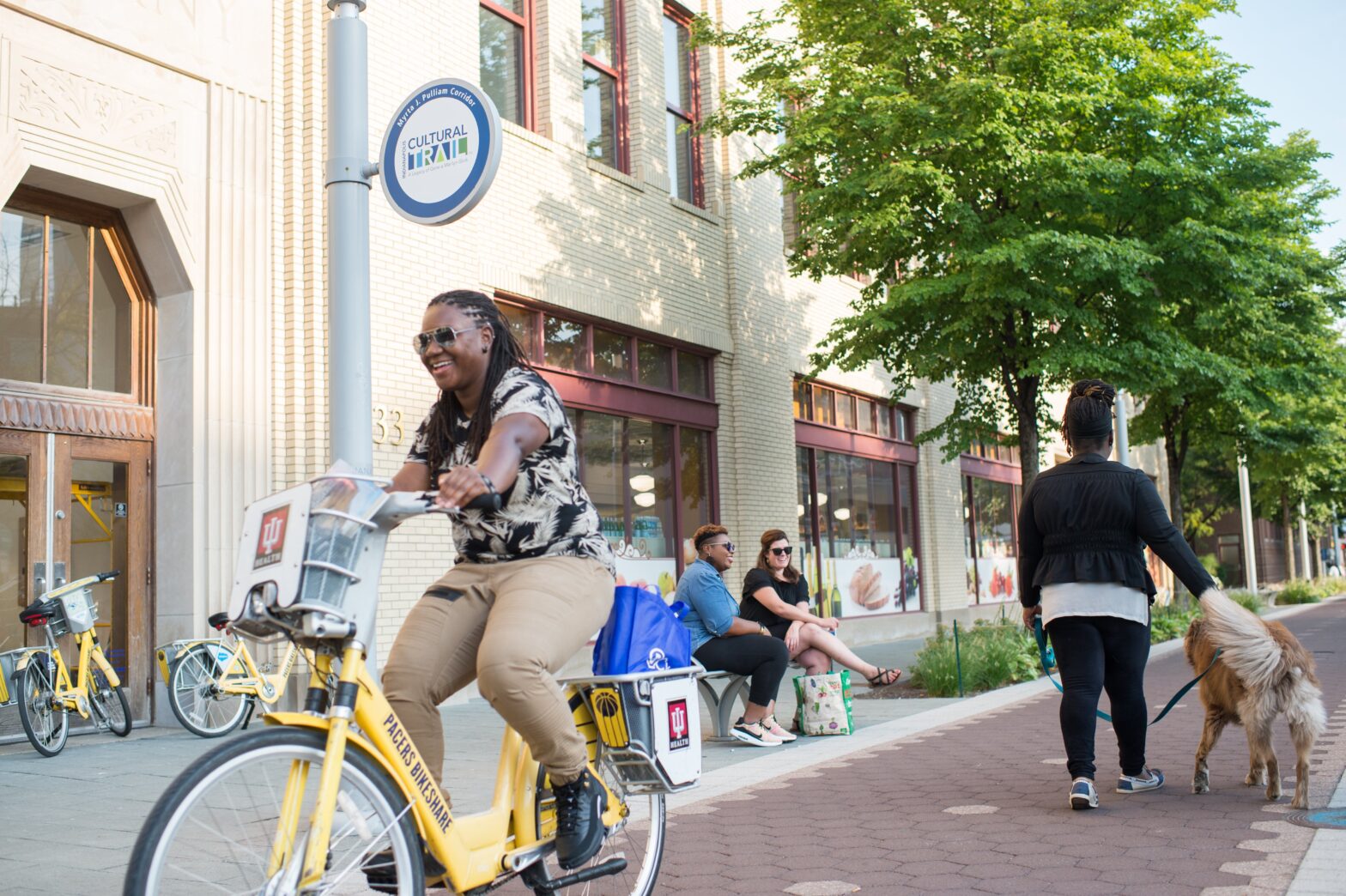Trails in the home of the world’s first Black champion cyclist, Marshall “Major” Taylor, are expanding. Indianapolis city leaders are investing more than $100 million in trail infrastructure to enhance, expand, and connect trails throughout the city.
“This is an unprecedented amount of funding,” Morgan Snyder, senior director of public relations and film of Visit Indy, tells Travel Noire. “I think it speaks to the importance of Indianapolis’s cycling culture and community and the quick growth here.”
Indianapolis has a thriving cycle community with more than 59 trails covering more than 293 miles. According to Morgan, Indianapolis’s cycling culture “is rooted in the history of Major Taylor.”
Becoming A Global Superstar During Segregation
Major Taylor was born in 1878 and started racing at an early age. His father, Gilbert Taylor, was a Civil War veteran who later worked as a carriage driver for a wealthy white family named the Southards in Indianapolis. The young Taylor would accompany his dad to work and became friends with a young boy named Dan in the Southard family. The Southards gave Taylor a bike due to his friendship with their son.
“From the beginning, people recognized Taylor’s talent,” Kisha Tandy, assistant curator at the Indiana State Museum, says. “He could do tricks and speed that would lead him to becoming a champion cyclist.”
Taylor won his first road race at 13, and by 14, he was working inside a bike shop in Indianapolis, where he would often perform cycling tricks. According to Major Taylor Cycling Club Little Rock, his nickname derives from Taylor frequently wearing a military uniform.
According to Tandy, by age 15, Taylor won his first significant competition on June 30, 1895. He became the only rider to finish a 75-mile road race on the outskirts of Indianapolis. On July 4, 1895, he won the 10-mile race in Indianapolis. Major Taylor became a professional cyclist in 1896 at the age of 18.
Even with his accomplishments, he faced many challenges as a Black cyclist. Racism played a significant role in his decision to move to Worcester, Massachusetts, the bicycle capital at the time. Often referred to as “the Worcester Whirlwind” and “the Colored Cyclone,” Taylor had to put his dreams of becoming a national sprint champion on hold in America because of hostility and physical threats he received for being Black. Discrimination and racism prevented Taylor from competing in critical races.
Things finally changed for him in 1899 when he won the World One Mile Race in Montreal, Canada. Tandy says Taylor also competed in Paris, Germany, and Australia. In 1901, he traveled to France, where he won 18 of 24 of his races, including a world title for sprinting.
Major Taylor retired from professional racing by 1932.
“What was so significant about his accomplishments is that he was able to do this after Reconstruction, during segregation, and when there was a lack of freedom and access Black Americans were allowed to have,” says Tandy.
Honoring Taylor’s Legacy Throughout Bike Trails in Indianapolis
Various trails and tracks in Indianapolis honor Major Taylor’s legacy. When riding on the Cultural Trail downtown, riders will find large-scale public art, including a large mural of Taylor. The mural is on the left-hand side of Washington Street.
According to Snyder, two miles were added to the Cultural Trail thanks to funding from the city. One of the miles along this trail goes into what locals call “Indiana Avenue,” a historically Black neighborhood known for its rich history.
“The Major Taylor Velodrome here in Indianapolis also honors him,” Morgan says. “There are not many operating velodromes operating in the country.”
